Modern arms control verification for the Outer Space Treaty
By Isobel Porteous | September 4, 2025
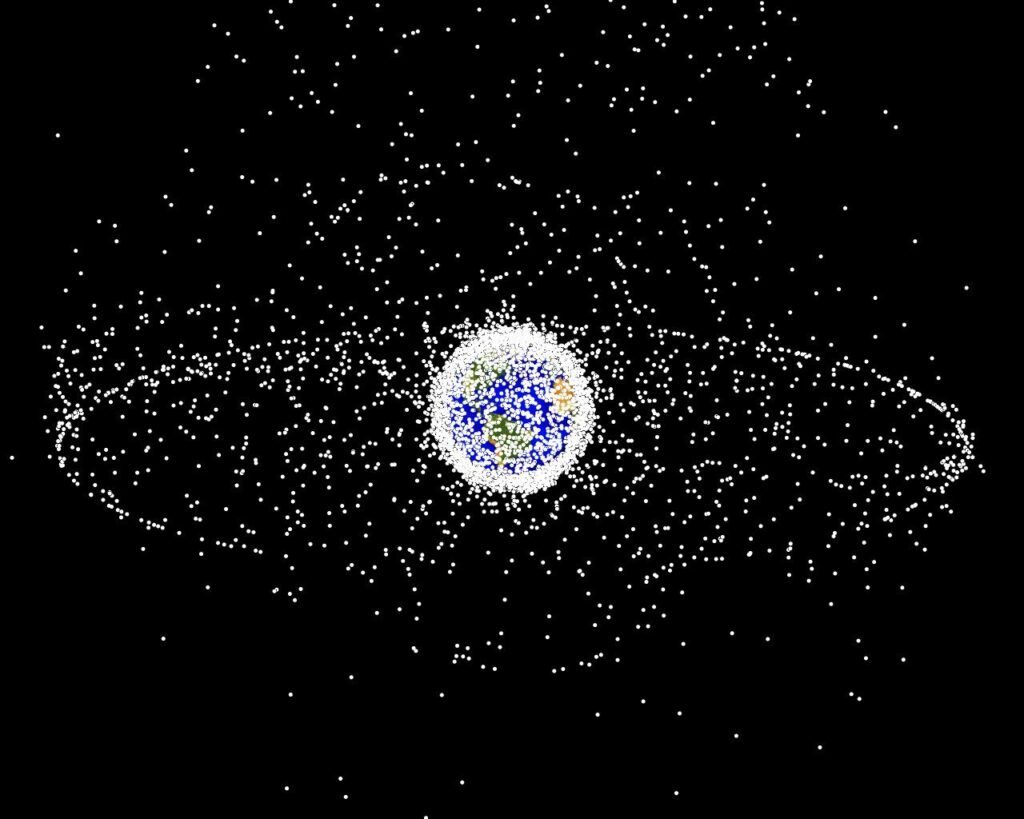 Classic space debris image showing LEO crowding and GEO equatorial ring. Image courtesy of NASA
Classic space debris image showing LEO crowding and GEO equatorial ring. Image courtesy of NASA
On July 8, 1962, the United States detonated a 1.4-megaton nuclear weapon 400 kilometers above the Pacific Ocean. The Starfish Prime test created an artificial aurora visible from Hawaii, nearly 900 miles away, and devastated the space environment. Of the 24 satellites in orbit at the time, eight were damaged or destroyed by the blast’s electromagnetic pulse and radiation belt. For five years afterward, the artificial radiation made large swaths of space inhospitable to spacecraft. The 1967 Outer Space Treaty, which banned nuclear weapons in space, was born of the recognition that such weapons threaten to inflict indiscriminate, lasting damage on all orbiting satellites and on the domain of space itself.
In the decades since, spacecraft have become critical to modern civilization. Accordingly, the stakes have grown dramatically. But international arms control measures—specifically space verification and monitoring for treaty compliance—have not kept pace.
In 2024, National Security Adviser Jake Sullivan publicly asserted that Russia is developing a nuclear anti-satellite weapon in violation of the Outer Space Treaty (an assertion that Russian President Vladimir Putin has denied). The lessons from Starfish Prime and the space arms control negotiations that followed have never been more relevant. Initiatives to strengthen arms control to preserve space for critical missions and the safety of future generations have never been more urgent. Fortunately, technological advances make verification and monitoring for space treaty compliance more attainable now than when the treaty was adopted in the 1960s—if political impediments can be overcome.
The Cold War origins of space arms control. Declassified materials from the Kennedy and Johnson administrations document internal White House debates that led to the first ban on nuclear weapons in outer space, a United National General Assembly Resolution that predates the Outer Space Treaty. This resolution, not discussed in many analyses of the subject, shows how executive leadership and diplomacy helped make the space nuclear weapons ban the largely unverified agreement that it is today.
When President Eisenhower first proposed prohibiting nuclear weapons in space in 1960, he insisted on “appropriate verification” through the United Nations. This demand for inspection of spacecraft was consistent with the US arms control philosophy during the Cold War, when America typically insisted on intrusive verification measures that the Soviet Union routinely rejected.
But the space domain presented unique challenges. In March 1962, as the Kennedy administration grappled with Soviet propaganda campaigns about Starfish Prime and weighed American plans to militarize space, Kennedy established a classified interagency effort known as the “NSAM 156 Committee.” It included representatives from the State Department, Defense Department, CIA, and the newly created National Reconnaissance Office.
The committee’s deliberations reveal tension between arms control ambitions and national security concerns. Defense officials worried that any inspection regime would compromise the secrecy of America’s fledgling spy satellite program. The very existence of the National Reconnaissance Office was classified (and remained so until 1992), and officials feared that allowing foreign inspectors near US spacecraft would expose critical intelligence capabilities.
The committee had other compelling arguments against verification. Existing verification technologies would prove technically inadequate for detecting small nuclear warheads. While some pre-launch inspection might be technically feasible, the US could not detect a nuclear weapon once in orbit. Due to these concerns, the committee’s initial recommendation to President Kennedy was unanimous opposition to any space weapons ban.
Kennedy’s pivotal decision. What happened next was remarkable in the annals of arms control history. President Kennedy rejected his advisors’ unanimous recommendation. In a July 1962 memo, Kennedy questioned “whether our position on insistence on inspection must be maintained on all subjects.” He asked instead for an evaluation of national technical means—unilateral US systems—to detect nuclear weapons in space.
This presidential intervention fundamentally altered the trajectory of space arms control. Kennedy’s willingness to accept an “unverified” ban represented a significant departure from standard US arms control policy. But it reflected a pragmatic assessment: The alternative to an imperfect agreement was no agreement at all.
The decision proved prescient when back-channel diplomacy revealed similar Soviet concerns about verification. In September 1963, veteran Soviet diplomat Igor Usachev privately told State Department official Raymond Garthoff that the Soviet Union had been “very wary” about potential inspection requirements. When Garthoff clarified that the United States would not insist on inspection, Soviet Foreign Minister Andrei Gromyko quickly publicly proposed a bilateral declaration banning nuclear weapons in space. In this way, Garthoff’s own initiative and personal engagement with his Soviet counterpart made significant progress for the bilateral relationship.
The result was UN General Assembly Resolution 1884, adopted in October 1963, which committed the United States and Soviet Union “not to station in outer space or place in orbit any objects carrying nuclear weapons or other kinds of weapons of mass destruction.” This language was later incorporated as Article IV of the 1967 Outer Space Treaty.
The reality of 1960s space technology. The absence of verification mechanisms in these agreements about the uses of space reflected both political expedience and technical limitations. Declassified documents reveal that the United States possessed no operational capability to inspect spacecraft for nuclear weapons in the 1960s.
The US military response plans for potential Soviet space weapons focused on offensive capabilities rather than verification. Memos between the Johnson White House and the Pentagon describe the development of two programs that used nuclear-armed interceptors capable of destroying hostile satellites, but these systems were crude and limited. Program 505, using modified Nike Zeus missiles, could target only satellites below 200 nautical miles in altitude and required five hours to respond to threats. Program 437, based on Thor missiles, needed 36 hours of tracking data before launch.
The most promising verification technology, Program 922, was designed to perform close-proximity inspections of satellites using non-nuclear interceptors. Crucially, planners considered equipping these systems with “nuclear material detectors” which could have enabled treaty verification. But Program 922 never flew a single test mission. It was defunded due to shifting budget priorities around the Vietnam War, which left the United States with no inspection capability when the Outer Space Treaty was adopted.
The modern imperative. In 1962, there were 24 satellites in orbit operated by two nations. Today, there are more than 48,600 tracked space objects owned by operators in more than 190 countries. It is a fact of life that the world is critically dependent on space systems for position, navigation, timing, communications, weather forecasting, and much more.
Global dependency increases the risk posed by a space-based nuclear threat. Roughly 90 percent of today’s satellites operate in low Earth orbit, most of them launched by commercial companies that have moved away from costly radiation hardening in favor of cheaper, less resilient components. A Defense Threat Reduction Agency study found that a single low-yield nuclear explosion at high altitude could disable “all LEO satellites not specifically hardened to withstand radiation” within weeks to months. Such an attack would be catastrophic for global infrastructure.
Considered in this light, the 2024 revelation that Russia is developing a nuclear anti-satellite weapon is an indiscriminate, existential risk to critical space systems around the world. White House National Security Adviser Jake Sullivan’s public claim about such a Russian system exposes an immense global vulnerability. It is exactly the scenario that Outer Space Treaty negotiators hoped to prevent. Still, the treaty provides no mechanism for definitively verifying compliance or investigating such potential violations.
The verification gap. The current verification regime for nuclear weapons in space relies entirely on national technical means—each country’s own intelligence capabilities. This approach creates several problems. First, it lacks transparency, as demonstrated by Russia’s outright rejection of US intelligence assessments. Second, it provides no mechanism for international response to potential violations. Third, it offers no assurance to the global community, which depends on space infrastructure.
The treaty’s verification provisions are limited and outdated. Article XII allows for reciprocal inspections of facilities on the Moon and other celestial bodies, but not of objects in Earth orbit—precisely where the ban applies. Article X permits states to request observation of space launches but relies on voluntary bilateral agreements. The entire framework assumes that national intelligence systems alone can provide adequate verification.
Modern arms control offers better models. Verification has evolved since the 1960s to include information exchanges, notifications, on-site inspections, and transparency measures that supplement national technical means. The Intermediate-Range Nuclear Forces Treaty, the Strategic Arms Reduction Treaty, and the Chemical Weapons Convention all demonstrate how intrusive verification can enhance compliance and build confidence.
Technology as an enabler. The technical obstacles that prevented space weapons verification in the 1960s no longer exist. Modern sensor technologies can detect nuclear materials from significant distances. Military and commercial operators have demonstrated successful satellite inspection in orbit. International monitoring organizations have developed sophisticated verification protocols for other weapons systems.
The challenge today is not technical but political. Kennedy’s 1962 decision to abandon verification requirements made the original space weapons ban politically feasible. Contemporary leaders have greater incentive, better technology, and broader coalition potential to strengthen space arms control with verification measures that address what has become a shared global threat.
Historical records show that Outer Space Treaty negotiators explicitly anticipated the need for stronger verification measures. In 1963, Secretary of State Dean Rusk wrote that “unforeseen events might make it desirable to have additional assurance at a future time.” The NSAM 156 committee deputies acknowledged that if inspection became “essential for our security,” they would “have to reconsider the matter.” One of Kennedy’s advisors commented, “If 100 to 500 objects appeared in orbit, there would be a reason to worry.”
That time has arrived. The development of Russian space nuclear weapons, global dependence on space infrastructure, and the thousands of objects in Earth orbit create exactly the security threat that should justify enhanced verification measures.
The solution is to adopt verification and monitoring protocols that reflect both modern technical capabilities and contemporary security needs. The declassification of the National Reconnaissance Office and the public acknowledgment of space-based intelligence capabilities removes some of the secrecy concerns that originally prevented verification measures. This opens the door for an international space monitoring and verification framework that could someday include:
- Standardized in-space inspection protocols. The growth of both government and commercial orbital rendezvous capability creates the possibility of standardized inspection protocols. These protocols should establish clear technical requirements for safe, collision-free trajectories during proximity operations, including mandatory minimum inter-satellite distances and approach vectors that minimize collision risk. Such protocols would serve dual purposes: enabling legitimate verification activities while protecting the growing commercial space economy from dangerous close-approach operations. These standards should distinguish between cooperative and uncooperative target inspections, with different trajectory requirements for each scenario.
- Nuclear detection standards and zero-knowledge verification. Using in-space inspection for verification requires defining the specific sensors that can reliably detect nuclear warheads aboard spacecraft without compromising the security of the mission under inspection. This approach should draw on established precedents in zero-knowledge cryptographic protocols, where one party can prove possession of information without revealing the information itself. The technical framework should specify allowable detection methods—such as gamma-ray spectroscopy or x-ray scanning—including sensor performance specifications and integration times. These standards would be constructed to enable verification while protecting proprietary technologies and mission-critical information. This requires setting detection thresholds that provide high confidence in identifying nuclear materials while minimizing false positives that could trigger unnecessary international incidents.
- Notification requirements. The protocol could require advance notification of spacecraft that might carry weapons or nuclear payloads. Such a notification regime should include notification requirements for spacecraft with nuclear thermal propulsion, nuclear electric propulsion, or radioisotope thermoelectric generators—systems that might trigger a false positive under inspection. This would provide early warning of potential violations while accommodating legitimate civilian and military space activities.
- Leveraging global space operators. The strategy for adopting this verification regime should leverage the global community that depends on space infrastructure and would suffer catastrophic losses from a nuclear weapon detonation in orbit. Outer Space Treaty verification is in the interest of all space-faring nations and represents the collective interests of the global economy.
The goal should be to create a verification regime that provides assurance of treaty compliance while accommodating the legitimate security concerns that shaped the original agreement—and the commercial interests that will continue to shape space activities in the decades ahead.
Updating a fundamental arms control agreement. For decades, no nation has carried out a nuclear attack in orbit. But success in the past does not guarantee security in the future. As the intelligence about Russian weapons development shows, nuclear risk in space is not theoretical but immediate. As the treaty’s negotiators foretold, “unforeseen events” would come to demand “additional assurance” of nuclear security.
The question remains whether contemporary leaders and diplomats can show the principled wisdom that made the original ban feasible. Sixty years after Starfish Prime, the case for keeping nuclear weapons out of space has never been clearer. Nuclear weapons are too dangerous to exist in space, and the space domain is too precious to destroy. Stronger political and technical verification mechanisms will help uphold the commitment to keep space nuclear weapons-free, and framing space nuclear weapons as a shared existential threat to global infrastructure can build broader coalitions than bilateral arms control agreements.
Together, we make the world safer.
The Bulletin elevates expert voices above the noise. But as an independent nonprofit organization, our operations depend on the support of readers like you. Help us continue to deliver quality journalism that holds leaders accountable. Your support of our work at any level is important. In return, we promise our coverage will be understandable, influential, vigilant, solution-oriented, and fair-minded. Together we can make a difference.


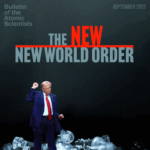
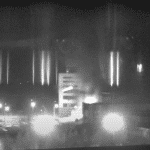




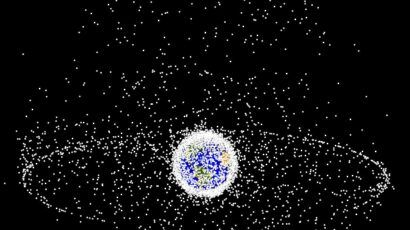

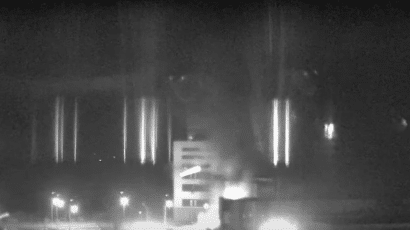
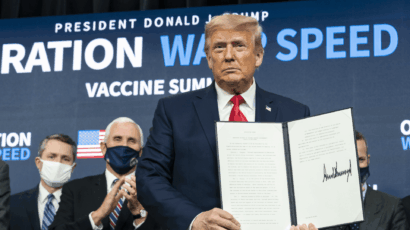




The NIKE ZEUS solution back then wouldn’t have really mitigated the problem if it itself used a nuclear warhead though right?
Also, could you achieve the same effect by detonating existing ICBMs at altitude?
But interesting to see the OST would allow inspection of Russia/China’s proposed nuclear powered lunar research station, I take it.